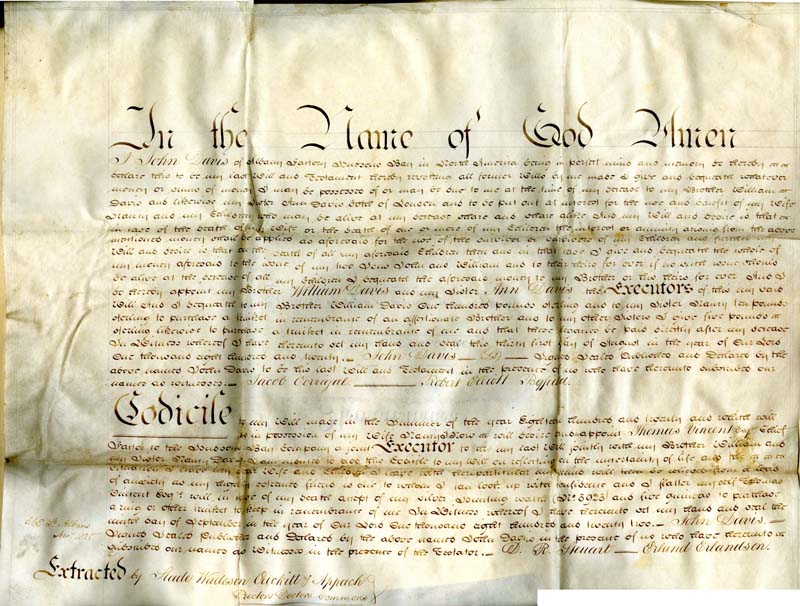Researchers often look for documents to help them answer their research questions. Often though, documents raise more questions than they answer. The 1820 Will of John Davis is an example. Most genealogy websites or historical websites that write about John Davis, HBC Factor and Master from 1803 to 1824, state that he and his wife Nancy (or Ann) had five children: Ann Nancy, Francis (Elizabeth?), Mathilda, Catherine, and George. And yet, in his will, John Davis writes;
“And my will and desire is that in case of the death of my wife or the death of one or more of our children the interest or annuity arising from the above mentioned money shall be applied as aforesaid for the use of the survivor or survivors of my children and further my will and desire is that on the death of all my aforesaid children then and in that case I give and bequeath the whole of my money aforesaid to the issue of my two sons John and William and to their heirs forever.”
The question is – who are these two sons and why are they the last on the list of heirs? Davis names them as his sons but not as one of “our children” (his and Nancy’s). A historian from Winnipeg has been researching the Davis-Hodgson families for several years and notes that HBC records indicate that a William Davis arrived at Portage des Chats in 1818, possibly as a clerk. This was the home town of John Hodgson, John Davis’s father-in-law. Of John Davis the younger, we currently have no clues.
This is only one of many questions this document raises. To hear more about this document and others curated from the records at the South Peace Regional Archives, come out to our presentation at the Grande Prairie Public Library Friday, 15 September 2017 at 1200 noon in the Rotary Room.
